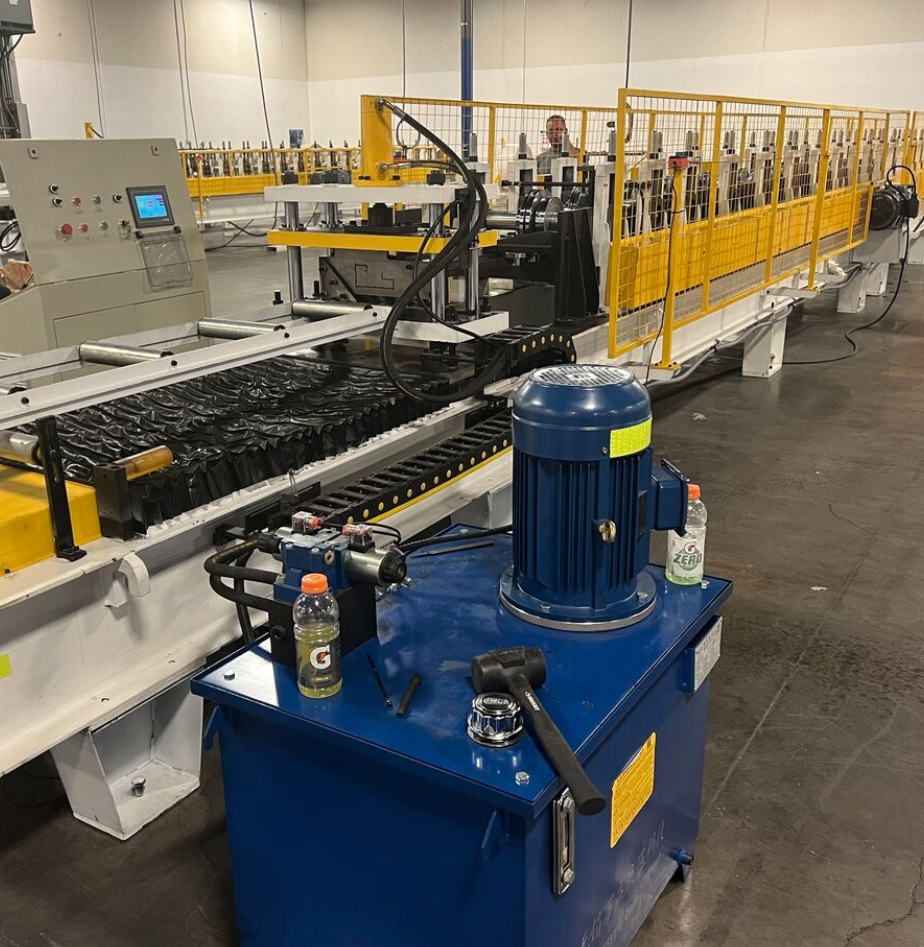
Posted on Monday, March 24, 2025
Roll forming is a key manufacturing process in the United States, used in industries ranging from construction and automotive to solar and infrastructure. With American companies pushing for precision, productivity, and durability, roll forming machines have become a staple in many factories. This guide covers the most popular roll forming machines in the U.S., including specifications, profiles, industry applications, setup and operation, maintenance, and price ranges.
Common Profiles: PBR panels, R panels, AG panels, standing seam, corrugated panels
Industries: Residential, commercial, and industrial roofing and cladding
Machine Specs:
Maintenance:
Common Profiles: U-track, C-stud, furring channel
Industries: Interior construction, drywall framing, prefabricated buildings
Machine Specs:
Maintenance:
Common Profiles: W-beam and thrie-beam guardrails
Industries: Highway infrastructure, traffic safety
Machine Specs:
Maintenance:
Common Profiles: Jamb, head, sill frames; roll-up door slats
Industries: Residential and industrial door manufacturers
Machine Specs:
Maintenance:
Common Profiles: C, Z, Sigma channels, strut channels
Industries: Solar energy, renewable installations, utility infrastructure
Machine Specs:
Maintenance:
These companies produce machines both for standard and highly specialized roll forming lines.
Machine Matcher works with hundreds of manufacturers and dealers across the U.S. and globally to help you match your ideal machine to your specific profile, production needs, budget, and industry standards.
Contact Machine Matcher:
Q: How do I choose the right roll forming machine for my business?
A: Start with your profile type, production volume, and available space. Contact Machine Matcher to help guide you based on your specs.
Q: How long does it take to set up a new machine?
A: Setup usually takes 3–5 days including calibration and testing, depending on the machine’s complexity.
Q: Can I use one roll forming machine for multiple profiles?
A: Yes, with adjustable or cassette-type roll formers. These are typically higher-cost but ideal for flexible production.
Q: Are used roll forming machines reliable?
A: Yes—if sourced from a reputable dealer or platform like Machine Matcher, used machines can offer excellent value and performance.
Q: What power requirements do U.S. machines typically need?
A: Most use 3-phase 220V or 440V depending on the factory setup.
Looking to buy the best roll forming machine for your business in the U.S.? Let Machine Matcher do the hard work for you.
Visit us at www.machinematcher.com or contact us today.

Understanding Coil IDs, Mandrel Sizing, and Shear Pin Safety in Uncoilers
Posted on Wednesday, October 1, 2025
Mismatched sizes can lead to machine damage, downtime, and safety hazards — often evidenced by a shear pin failure.

How Coil Tensile Strength Affects Roll Forming and How to Adjust Your Machine
Posted on Wednesday, October 1, 2025
Changes in tensile strength can significantly affect the finished profile, causing misaligned bends, uneven edges, and out-of-spec parts.

Why Paint Cracks on an Embossing Line Running Pre-Painted Coil and How to Prevent It
Posted on Wednesday, October 1, 2025
This issue not only affects the visual quality of the product but can also lead to increased scrap rates and customer complaints.

The Most Popular Standing Seam Metal Roof Panels in the U.S. — A Comprehensive Guide
Posted on Monday, September 29, 2025
In this post, we’ll explore what panel styles and sizes are most popular in the U.S